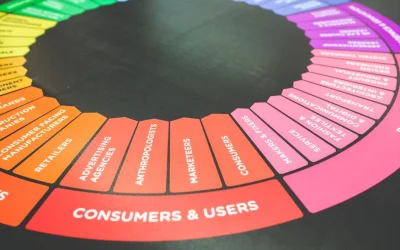Social media analytics is no longer optional, t’s the backbone of any successful digital marketing strategy. Every click, share, and comment holds valuable insights that can refine your marketing approach, enhance engagement, and maximize conversions. Without data-driven decision-making, brands risk wasting resources on ineffective content and missing opportunities for growth.
In this guide, we’ll break down the importance of social media analytics, explore essential tools, and show you how to use data to improve your marketing strategy with practical steps.
What is Social Media Analytics & Why Does It Matter?
Social media analytics refers to the collection, measurement, and analysis of data from various social platforms. It helps marketers understand audience behavior, track campaign performance, and make informed decisions to boost engagement and ROI.
By leveraging insights from Facebook Insights, Twitter Analytics, Instagram Insights, and other tools, brands can continuously refine their marketing strategies for better performance.
How to Use Social Media Analytics to Improve Your Marketing Strategy
1. Understanding Audience Behavior with Social Media Analytics
Your audience isn’t a mystery, social media analytics reveals who they are, what they like, and how they engage with your content. Platforms like Google Analytics and Meta Business Suite provide insights into:
- Demographics (age, gender, location)
- Interests & Behaviors (purchase intent, hobbies)
- Engagement Patterns (best times to post, preferred content formats)
Example: If analytics show that 70% of your audience engages with video content but only 20% interact with text-based posts, it’s time to shift your content strategy towards short-form videos and reels.
Pro Tip: Use Google Trends to track trending topics and align your content with popular discussions.
2. Identifying the Best Social Media Channels for Your Brand
Not every platform is suitable for every business. Social media analytics helps you determine where to focus your efforts for maximum impact.
Key Metrics to Monitor:
✔ Reach & Impressions – How many users see your content?
✔ Engagement Rates – Which platform generates the most likes, shares, and comments?
✔ Traffic Sources – Which social networks drive the most website visits?
Stat Check: Instagram Reels now deliver 22% more engagement than static posts! (Source: Sprout Social)
If LinkedIn outperforms Twitter in terms of engagement, it’s wise to reallocate resources to LinkedIn marketing rather than spreading efforts too thin.
3. Measuring Engagement: Focus on Meaningful Metrics
High follower counts mean nothing without real engagement. Social media analytics helps filter out vanity metrics to focus on KPIs that impact business growth.
Likes & Comments – Do users actively engage with your content?
Shares & Saves – Are your posts valuable enough to be shared?
Click-Through Rates (CTR) – Are people taking action?
Avoid the Trap: A post with 10,000 likes but no comments or shares indicates passive engagement, while 500 shares signal high-value content.
Hootsuite’s Guide to Engagement Metrics can help you analyze and improve these metrics effectively.
4. Influencer & Brand Advocate Analytics: Leveraging the Right Voices
Influencer marketing can skyrocket brand awareness, but only if done right. Social media analytics tools like BuzzSumo and Traackr help businesses find influencers with authentic engagement, not just large followings.
Case Study: Nike uses social media analytics to track influencer performance, ensuring collaborations drive real customer actions, not just likes.
Use BuzzSumo to analyze influencer reach and content performance before investing in partnerships.
5. Social Media Analytics & Campaign Performance Tracking
Running social media ads? Analyzing performance data is critical for optimizing ROI.
Key Metrics for Campaigns:
✔ Conversion Rates – Are people signing up, purchasing, or engaging beyond social media?
✔ Ad Click-Through Rate (CTR) – Are your ads compelling enough?
✔ Return on Ad Spend (ROAS) – Is your investment yielding profits?
Example: If a Facebook ad targeting a broad audience has a low CTR, narrowing the audience based on analytics insights (e.g., targeting users who engaged with past posts) can improve results.
6. The Bigger Picture: Integrating Social Media Analytics into Your Marketing Plan
Social media isn’t just about engagement, it feeds into your entire digital marketing strategy. By aligning social media data with other marketing efforts, businesses can:
Improve Email Marketing – Use analytics to determine what topics resonate and craft personalized emails.
Enhance Paid Advertising – Leverage high-performing social posts in ad campaigns for better results.
Influence Product Development – Monitor customer discussions to identify demand for new features/products.
7. Best Practices for Social Media Analytics Success
✔ Set Clear Goals – Define KPIs before analyzing data.
✔ Use Multiple Tools – Combine platform insights with third-party tools for deeper analysis.
✔ Monitor Trends Regularly – Social media evolves fast, stay ahead.
✔ Balance Quantitative & Qualitative Data – Numbers tell part of the story, but customer feedback adds context.
Remember: Data without action is useless. The real power of social media analytics lies in using insights to create meaningful content, optimize campaigns, and engage audiences effectively.
Final Thoughts: Why Social Media Analytics is a Game-Changer
In today’s data-driven marketing landscape, relying on guesswork is a recipe for failure. Social media analytics provides the roadmap for brands to make smarter, more strategic decisions, leading to better engagement, conversions, and business growth.
Start tracking, analyzing, and optimizing today! Need help? Explore Google’s Free Digital Marketing Certification to level up your skills.
Because in marketing, those who analyze, win. Our team specializes in social media analytics to help your business.
Call Us Today: (800) 395-4096




0 Comments